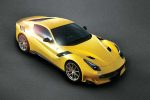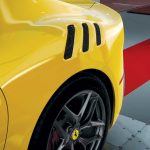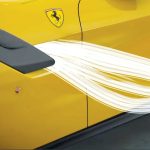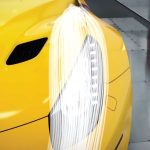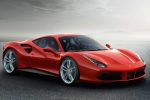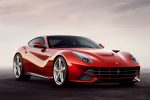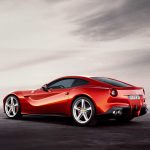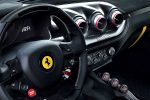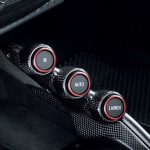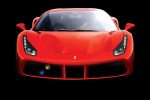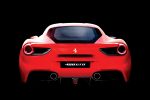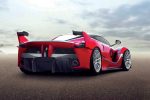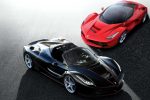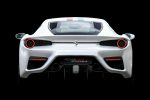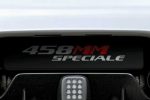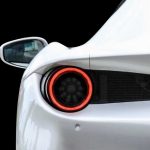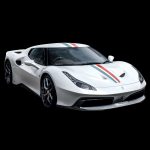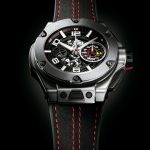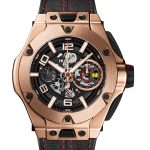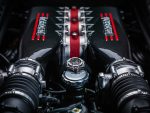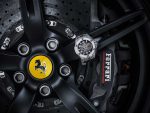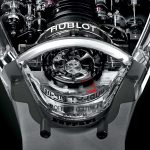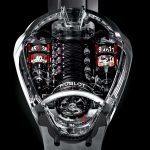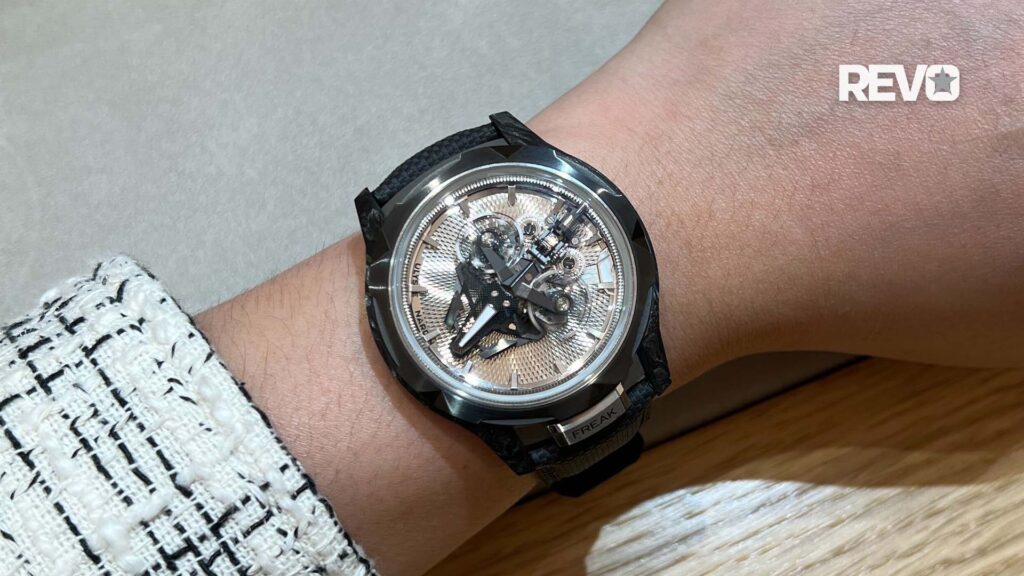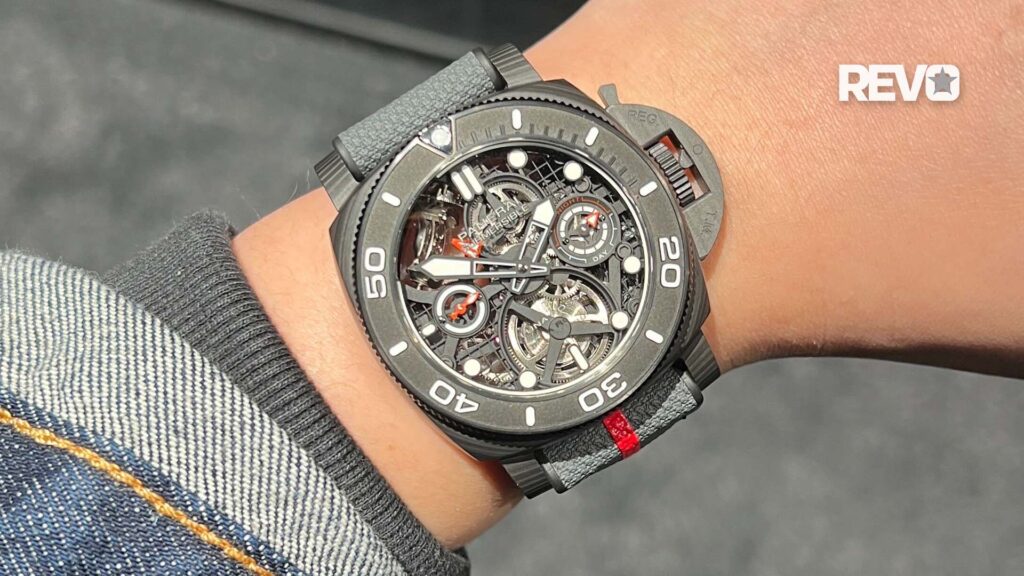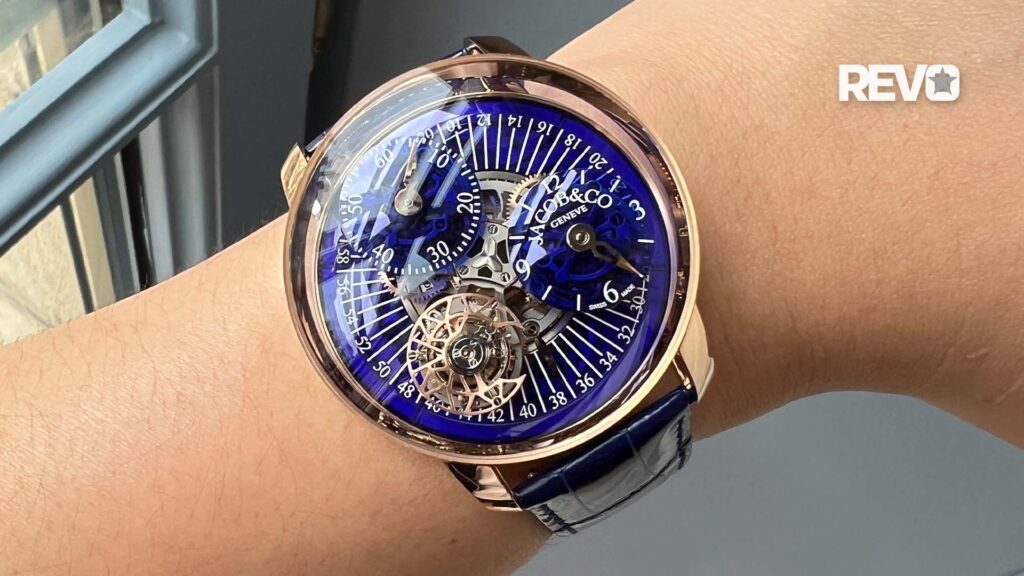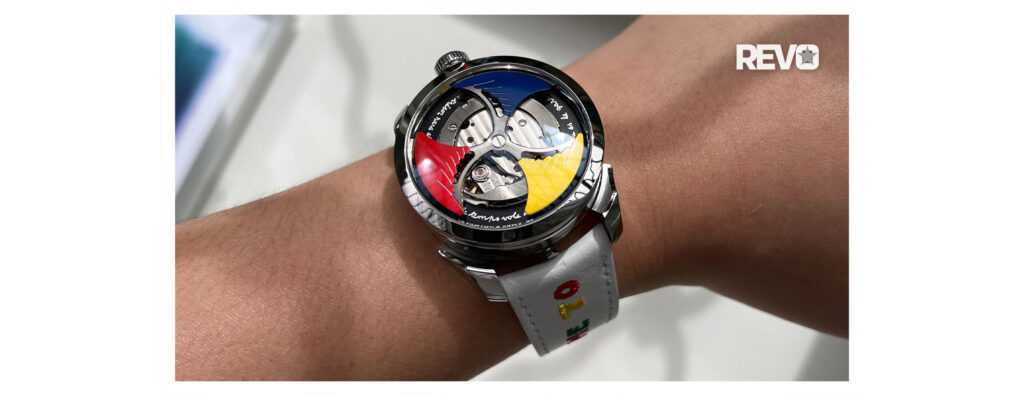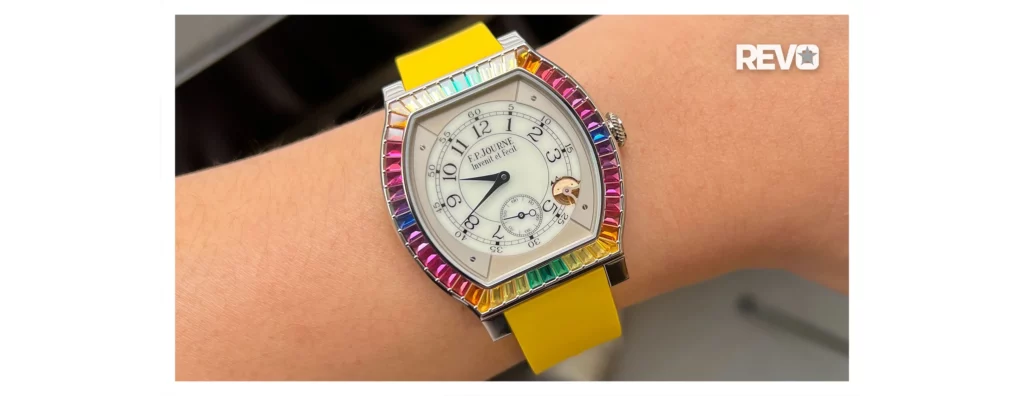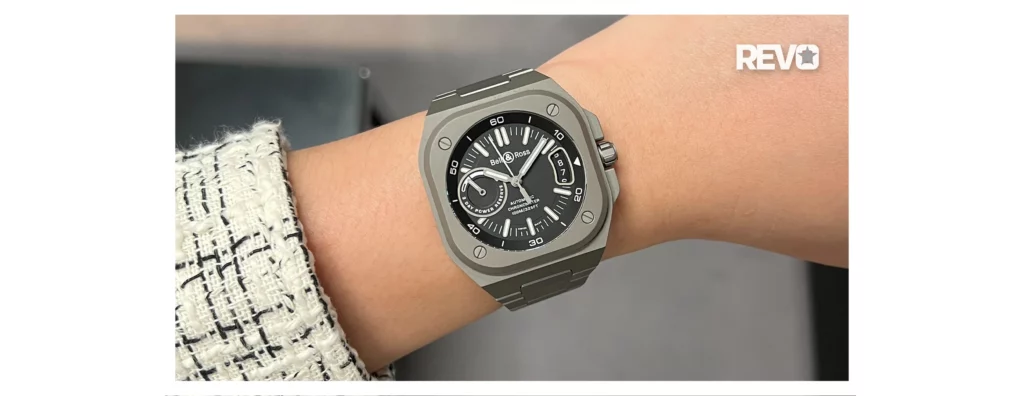Hublot
The Aesthetic Revolutionary: Flavio Manzoni, Design Director of Ferrari & Hublot Lover
Under his leadership, Ferrari has won the Compasso d’Oro, one of the world’s most revered and oldest industrial design awards, for the F12berlinetta in 2014 and again for the FXXK in 2016, making Ferraris only two of the nine automobiles to every achieve this prize since the founding of the competition in 1954.
In 2015, Ferrari achieved a staggering three Red Dot Awards for the FXX K (winner of the Best of the Best prize), the California T and La Ferrari. Again in 2016, the Ferrari 488 won the Red Dot Best of the Best Award.
But more than this, Manzoni is a once-in-a-generation artist, like Constantine Brancusi or Gio Ponti, who has selected instead of sculpture or architecture, the medium of the super car as his elected path to immortality.
Already these cars are being heralded as the Dino, the 250 and 288 GTOs, the 275 GTB4s and the F40s of their generation. It is not coincidental that Ferrari has never been more successful, with waiting lists for admission into the waist list of their regular production cars, let alone their special editions. But Manzoni and Ferrari’s latest project is a collaboration with that most dynamic of watch brands, Hublot, and the results are timepieces that are the first collaboration between Ferrari’s design team and a Swiss high watchmaking brand.
It was my pleasure to speak to this aesthetic revolutionary, this one-in-a-million visionary to learn about his most recent accomplishments at the fabled Ferrari.
I think Ferrari is one of the very few objects, one of the few cars that transmit this ideal of the soul. The Greeks believed in the concept of “anima” in objects, or the animating principle. This is what triggers emotion in people.
A Ferrari is not a machine. Yes, on some level it is the reconciliation of aerodynamic, mechanical and aesthetic properties. But it has to be more than this. It has to speak through a sort of meta language, not through words.
Ferrari always comes from a dream. So our job is to find the conjunction between the dream and reality while still keeping all the beauty of an emotional object.
I am told that the technical constraints of a car actually help you to define what it should look like. Is this true?
Well, if you were to ask other designers, they may say the technical constraints are a problem, it is difficult to design a car if the technical constraints are too many. But at Ferrari, we respect first and foremost the engineering and we believe that engineering is a thing of beauty and therefore should be translated in a beautiful way.
I look at technical constraints as an opportunity to bring a signature design to a new Ferrari, to empower the visual identity of a new Ferrari. It is about understanding them and then channelling them in a creative way.
Can you give me an example of this?
Sure, for example, you look at the shark fins on the rear fender of the F12tdf. Many people felt that these were reminiscent of similar vents found in the 250 GTO and some of our other iconic cars.
But these are not a stylistic flourish; in fact, they come about from a specific request of the aerodynamicist. There was also the request to have additional little spoilers at the two sides of the rear screen. We made many proposals but they added so much unwanted detail, so much visual noise to the rear that I was completely against this.
And then at some moment I had the intuition to use a special T cut on the rear glass to function as a spoiler. So, combined with a kind of two scallops under the glass, it really works like spoiler. So we could reach the objective of the aerodynamicist in a very interesting way. And few people know this.
They might say, oh, this is a stylistic feature, but the reality is that the this theme is born of a technical need. Another detail is the aero bridge of the F12tdf. People recognise it as a signature design element but it is a technical necessity for the car.
(Laughs) Well, to tell you the truth, honestly I didn’t want them. There were actually two solutions for the aerodynamic issue in the F12tdf. The first was a sort of channel that we created in this area of the car, similar to the channel you see in the 488 GTB rear fender.
Then there were these shark fins. But I didn’t like them because they were immediately recognisable as a sort of retro feature. Suffice it to say it was only after many attempts with the first solution that I had to accept to use these fins, which is a bit funny because it is something people very much love about the design.
I have to admit it works very well from a functional perspective, but for my way of thinking they are not subliminal enough and maybe a bit too overt. In the end, I said “OK if we’re going to do this let’s go all the way and do it in a very Ferrari way that recalls not just the GTO but the 275 GTB4, for example”.
We made an analysis of the new content for the Tdf version of the F12. We recognised that the Tdf was meant to be much more of a race-specific car and this allowed us to follow a different set of stylistic codes in comparison to the Berlinetta, which can be somehow elegant and refined.
Conversely, the Tdf could be more “brutal” because it is a race car. So our focus was to interpret this brutality into a holistic product that represented a different aspect of Ferrari’s personality. I said, “Let’s show off all the racing elements in a graphic way as opposed to the more sculptural elegance of the bodywork”.
I think this interplay and tension between the new graphic elements and — let’s say — the organic plasticity of the underlying F12 model creates something very energetic. It makes the car very special. It creates a dynamic tension; a certain predatory feel.
One of the signatures of the Tdf is the carbon fiber blade that transitions into the air channel integrated into the door of the car. This is another integral aerodynamic element. But if you looked at the very original carbon fibre blade, this was very ugly and so we ended up having to treat it like a composition of elements.
But it also becomes an integral part of the design because in some ways it helps the proportion of the car as it cuts the car into two parts. It changes the whole balance and equilibrium of the car. It is a dialogue between lines in different directions. When you compare this to the three fins on the rear fender of the car, you feel again this tension between two such opposing elements, one that is so overt and one that is so subliminal and this again gives the car such great energy.
The interiors of the Ferrari special editions have this sculptural bridge like a Brancusi wing. What is this?
You mean the bridge for the center console? In the concept of the at Ferrari, most of the controls are incorporated into the steering wheels. We call this the “F1” concept for our controls. But there are still a few critical controls that are separated out and placed on what we call the bridge.
There are two versions of our bridge: one is the symmetrical version, which is found in most of the cars. The other one has a sort of wrap around version that belongs to the special edition cars. But in both instances the idea was to re-create the famous cancelletto or aluminum “H Gate” from our gear selector in the manual drive cars.
The problem was that when Ferrari made the change to the paddle shift dual clutch cars, this very iconic, very emotive element instantly disappeared from the vocabulary of Ferrari. So our idea was to create a new element that was equally iconic that would take the place of the original gate.
In the modern cars, they retain the buttons for Reverse, Auto and Launch. But I like that you mention Constantin Brancusi because he is someone that I really love. And one of the saying I love best from him is, “Simplicity is a complexity resolved.” This is what we try to do at Ferrari to create apparent simplicity by resolving very high complexity. It really represents the job of the design team every day.
What I always say to my team is: “Think about how the car you are designing today will be perceived in 50 years time.” So we approach our job trying to create designs that are timeless; that are intemporal.
What was the main point of focus for the design of the 488?
When we started the 488 project, the first thing we kept in mind was that it was not a naturally-aspirated engine but a turbo charged engine. This was something very well received by us because we thought due to this new aspect of the car we could create something very different. So we thought the turbo-charging should be reflected in the shape.
This is why you have the channels in the rear fenders that are driving air to the intercoolers of the turbo while also providing an aerodynamic effect to the car. If you look closely you will see that each of these air intakes has a divider. Air above the divider exits out the back next to the lights and air below goes to the intercooler to improve aerodynamics.
Tell us more about the concept behind the shape of the 488.
This was the perfect opportunity to give the appearance of a sculptural form created by subtracting volume from the car. We started from a volume, then step-by-step excavated shape in a sculptural way. We wanted to create the sense that the rear fenders were detached from the cabin.
On the other hand, they are two of the most important functional elements of the car. In the beginning of the project, we had already began discussing the with the aerodynamicist about creating these channels inside the rear fenders of the car.
The small horizontal wing drives air in below to the intercooler and above to exit from the back of the car. These ducts are made from aluminum. They are interesting because they are new, nobody has ever used this concept before and at the same time they create a dialogue with the eyes.
They bring a lightness and in someway change the feeling and expression of the rear end. They make the car seem very wide, and the stance very aggressive. But I love that they are not a simple stylistic detail: they are incredibly meaningful to the function of the car.
We were so proud. If you think about it, that the jury had to judge 5,500 products from every sector, it was an incredible job. The process lasted three days and when Ferrari emerged victorious amongst so many products, it was so rewarding.
We are really honoured. I brought many members of the design team and they were just so enthusiastic. The entire jury was amazed at the incredible conception of the car and the content that went into the car.
Tell us about the design objective for the now legendary 458 Speciale.
As with the Tdf, the Speciale was conceptualised as a track-specific version of the 458. As such, we could allow for different codes, codes that were less sophisticated but were bolder or freer to give the right emotion and right shape. The Speciale is a different animal, an animal that lives on the track and the result was our way to interpret this. We were quite inspired when we approached this car.
To begin with, it has a different geometry than the 458. It is much higher in the back and a bit longer with spoilers that are quite brutal in reality. So we concentrated our energy on developing a very special “black and white” relationship for all the elements of this car.
I really love, for example, the peculiar shape of the mesh under the rear spoiler. I think this black mesh fascia gives a very special character to the car. In the front, the problem was the complexity of the aerodynamic dividers.
How did it feel to win the Compasso d’Oro first for F12berlinetta and then again for the FXX K?
What I think is most positive about this award, it is only in recent years and in particular with two Ferrari’s that the jury has begun to consider car design to be of the same artistic and intellectual value of other global designs. It is a nice acknowledgement for the car community.
I suppose one quality that is unique to car design is the incorporation of performance into what we design. The jury was really astonished by the design details, they were struck by how complicated the underlying engineering was and impressed at the combination of technical complexity and beauty, science and art.
Tell us a bit about the concept behind the LaFerrari Aperta.
When we started the LaFerrari project, we were already thinking about transforming the car into a roadster. If you look at the cabin, which is like a transparent fuselage, partially in glass and partially in carbon fibre, it was created to allow a roadster version without touching any of the major lines of the car.
So, when you look at the roadster you see we haven’t changed any of the codes of the car and the relationship between the cabin and the rest of the body work because we had this in mind at the very moment we conceived LaFerrari.
It was created for an English customer who wanted a unique car based on the 458 Speciale platform. So the car was completely redesigned following his wishes. Our symbiosis with this customer was very good as he was a very open-minded person. He had a few ideas. For example, the wraparound effect of the glass in the cabin was inspired by the 288 GTO and also the Lancia Stratos. He wanted a white car with an Italian flag in the centre. And it was amazing to see how the chassis of the 458 Italia was so valid for such a completely different reinterpretation. If you look at a normal Speciale next to this one, you see two totally different cars, with two totally different souls. We are very proud of the result because this car is harmonious. It is a sculpture. It is a harmonious sculpture.
What is the purpose behind these kind of unique Ferraris?
Ferrari wanted to give the opportunity to the very best Ferrari collectors to create their own unique Ferraris. These collectors will work with the design centre, following a very clear design process. It’s quite a long process: it takes almost two years to create a car. It’s a way to create a very important and rare project, because we guarantee the exclusivity of the design. The design characteristics will not be repeated in any other car. It’s an opportunity for us because each time you discover the incredible expressive potential of the Ferrari language while still being 100 per cent respectful of the DNA of the brand.
We always welcome the possibility to transfer the Ferrari DNA and our design approach to another category of product, in this case a watch that is characterised by a very complicated and sophisticated movement. It was nice to see the start of this project. We had a kick-off meeting with Jean-Claude Biver and Ricardo Guadalupe. We opened the doors to our modelling studio, they saw the LaFerrari model that was under construction.
What was the intellectual process?
The initial idea was to create a watch with a sort of aerodynamic shape. And I said, “Please don’t make this mistake. The aerodynamic language of LaFerrari comes from certain necessities and objectives. We cannot just repeat a form like this: it would be too rhetorical. Too banal.” But if we were going to create a watch, I thought we needed, first to understand the engineering concepts behind it before we decided on the right shape to be conveyed to the object. My intuition was the similarity between our LaFerrari engine, the Kers behind the gear box, for example, and the incredible language of the Hublot masterpiece watch movement. So, I proposed we show the engine as we do in our cars, making the engine of the movement a kind of jewel to be displayed under the glass. We repeated more or less the same principal using a curved sapphire with a shape that recalls the rear screen of LaFerrari.
Are you a watch fan?
Yes I’m quite crazy about watches. I have a small collection! I love Hublot.




